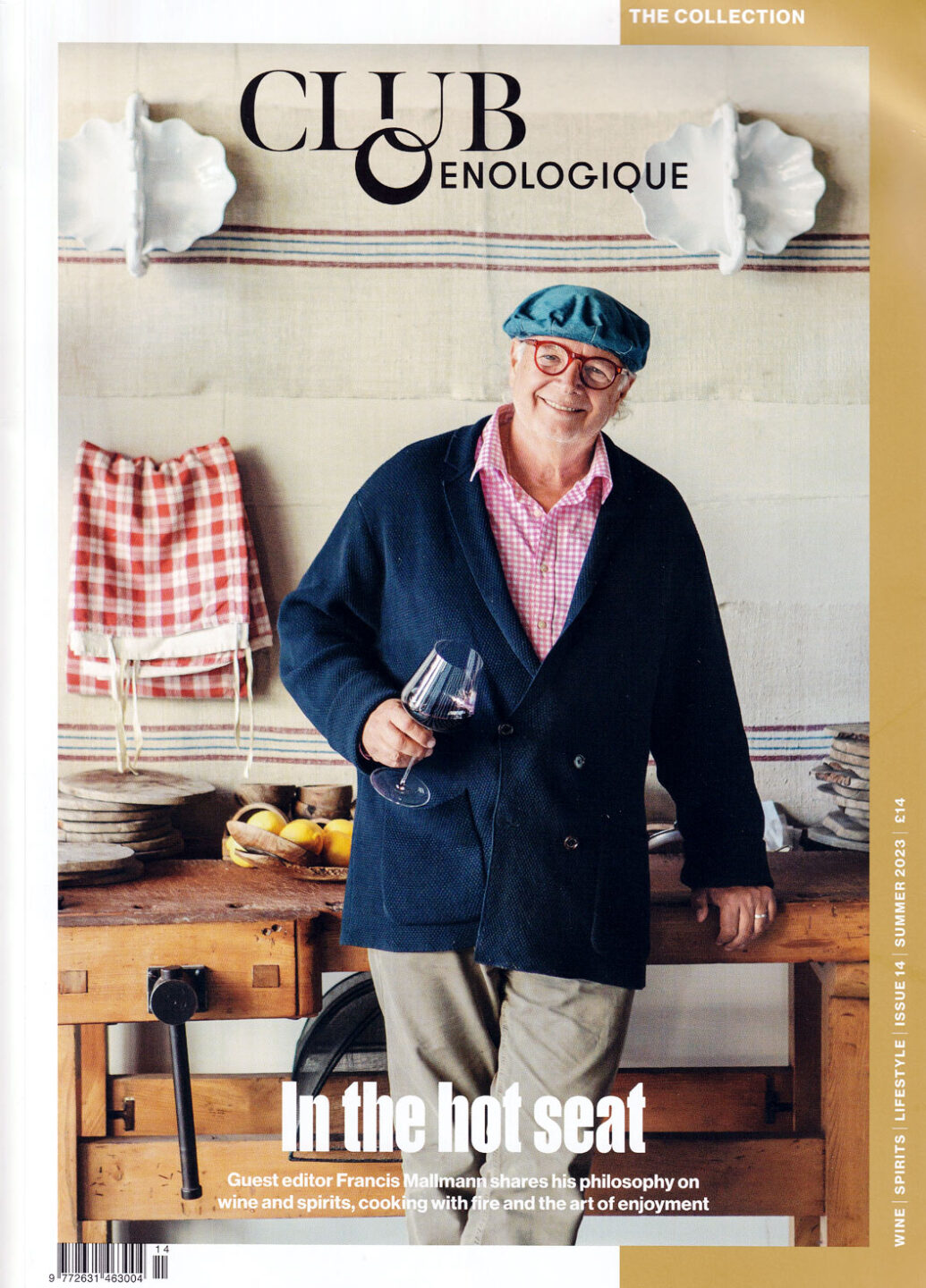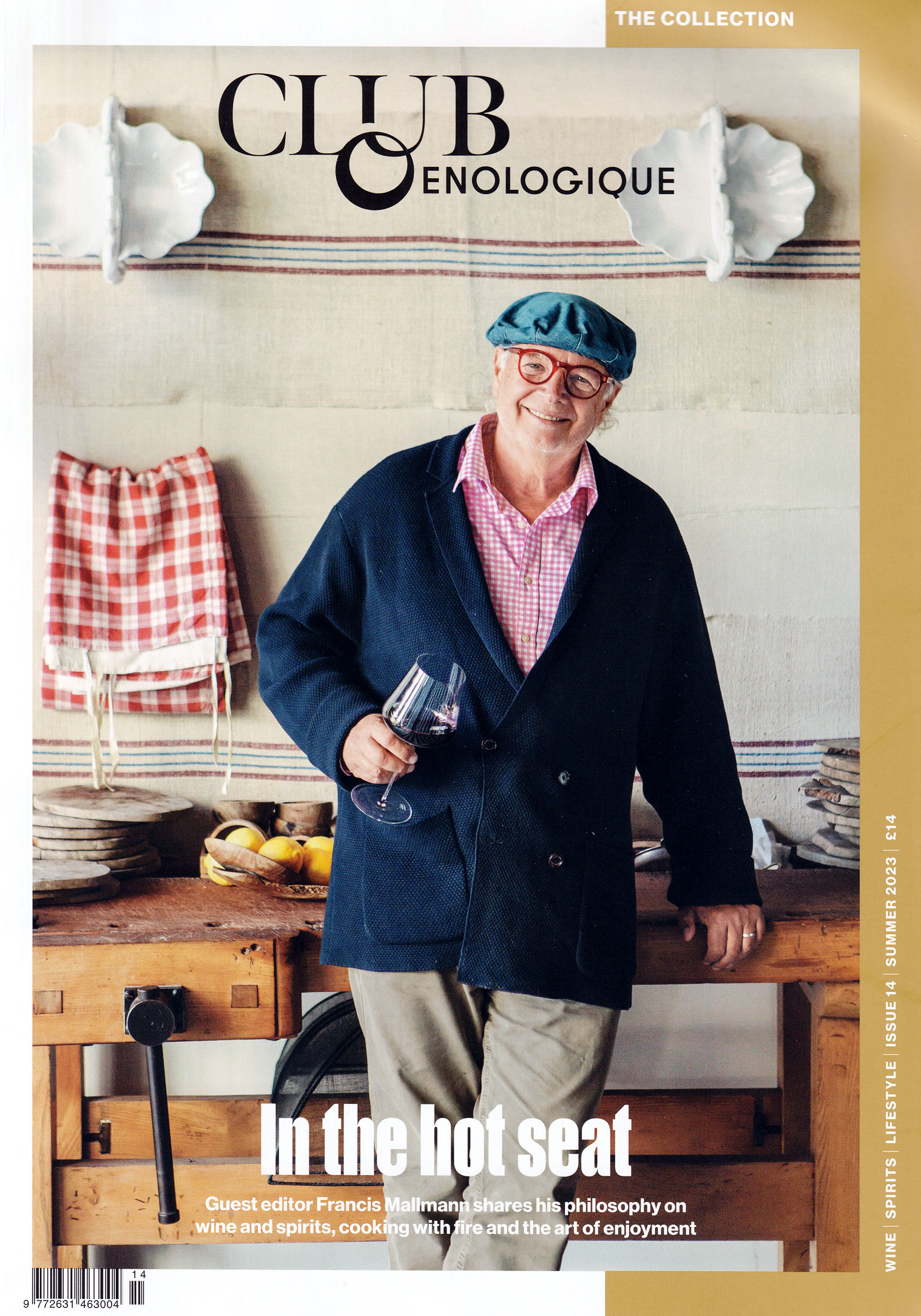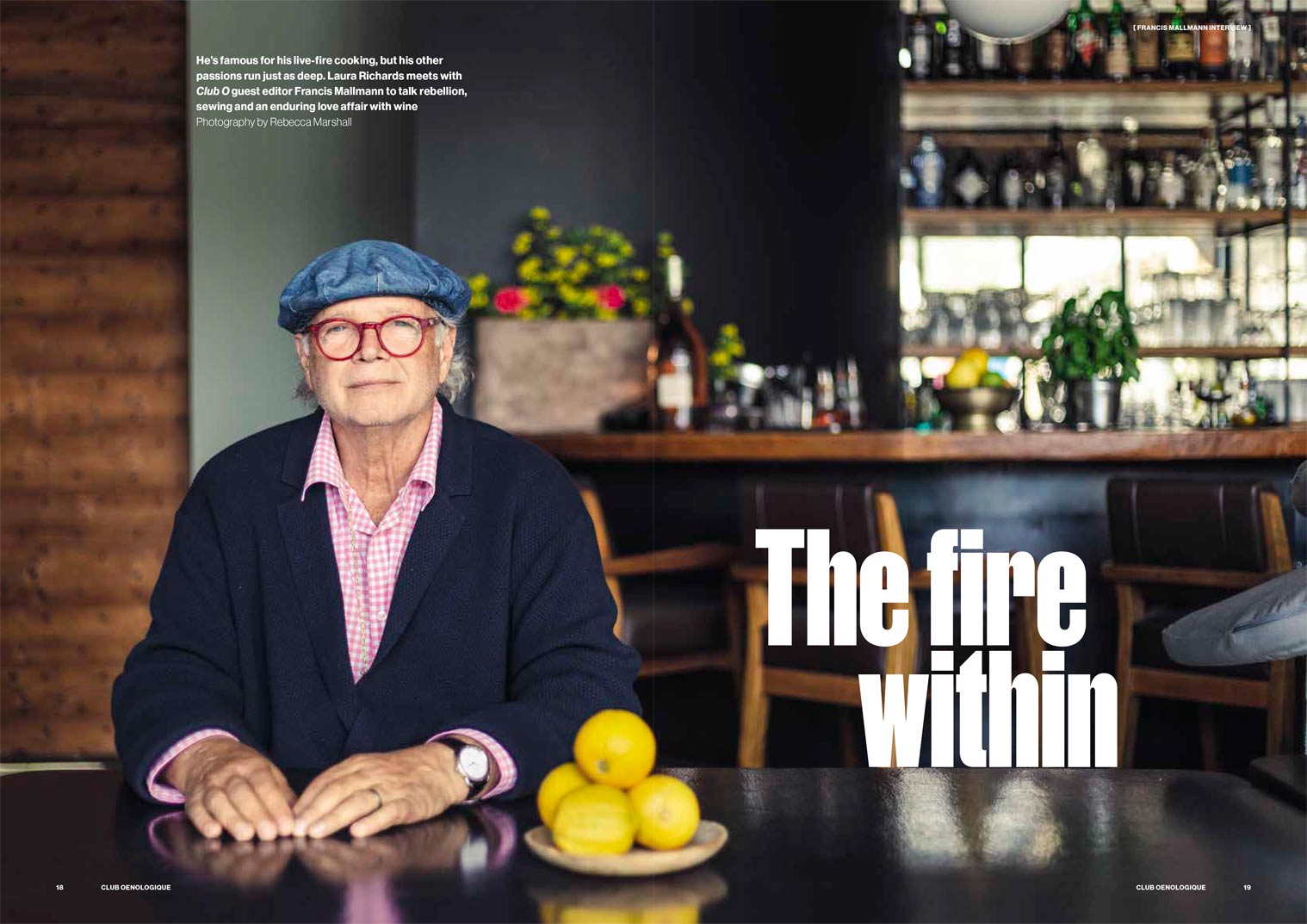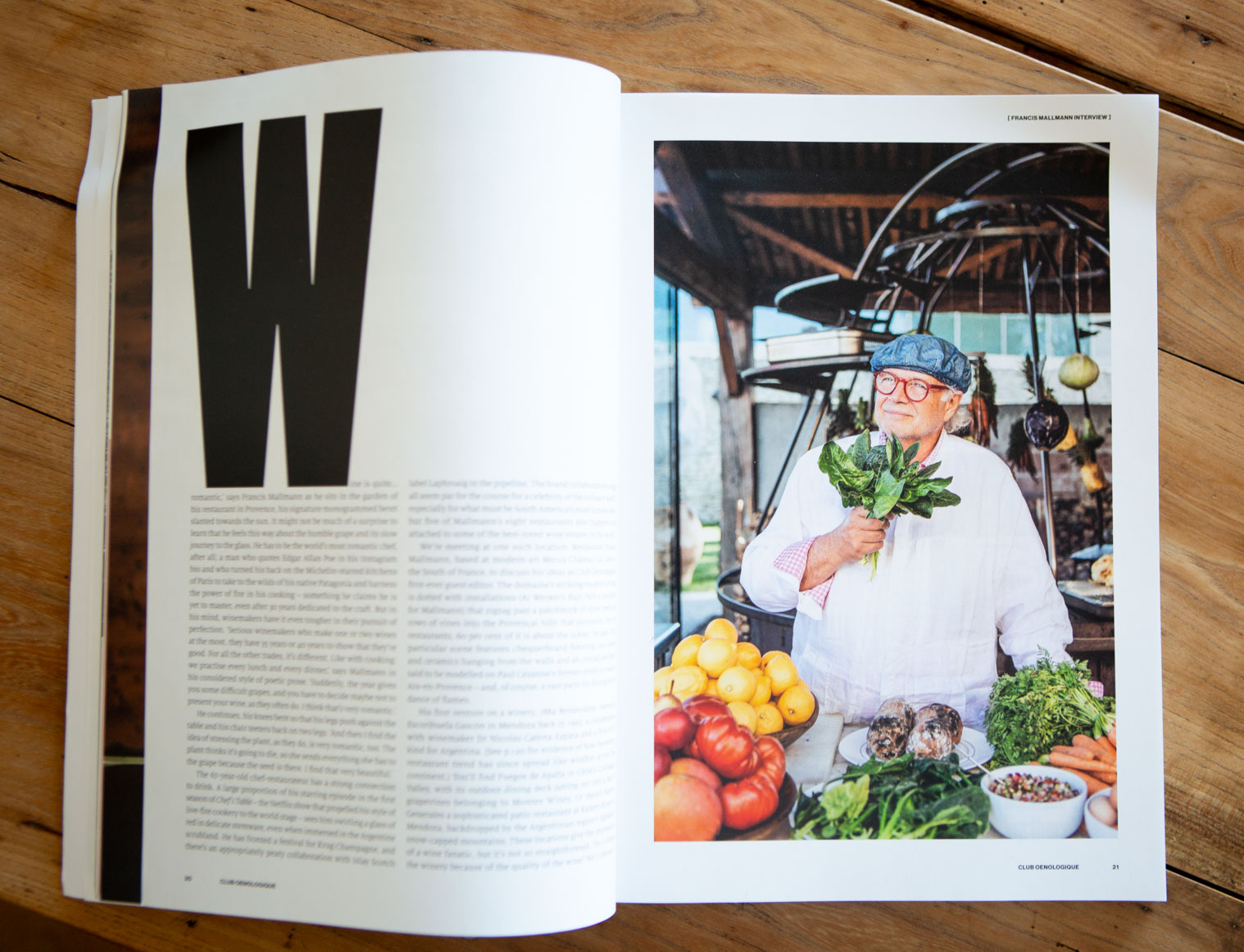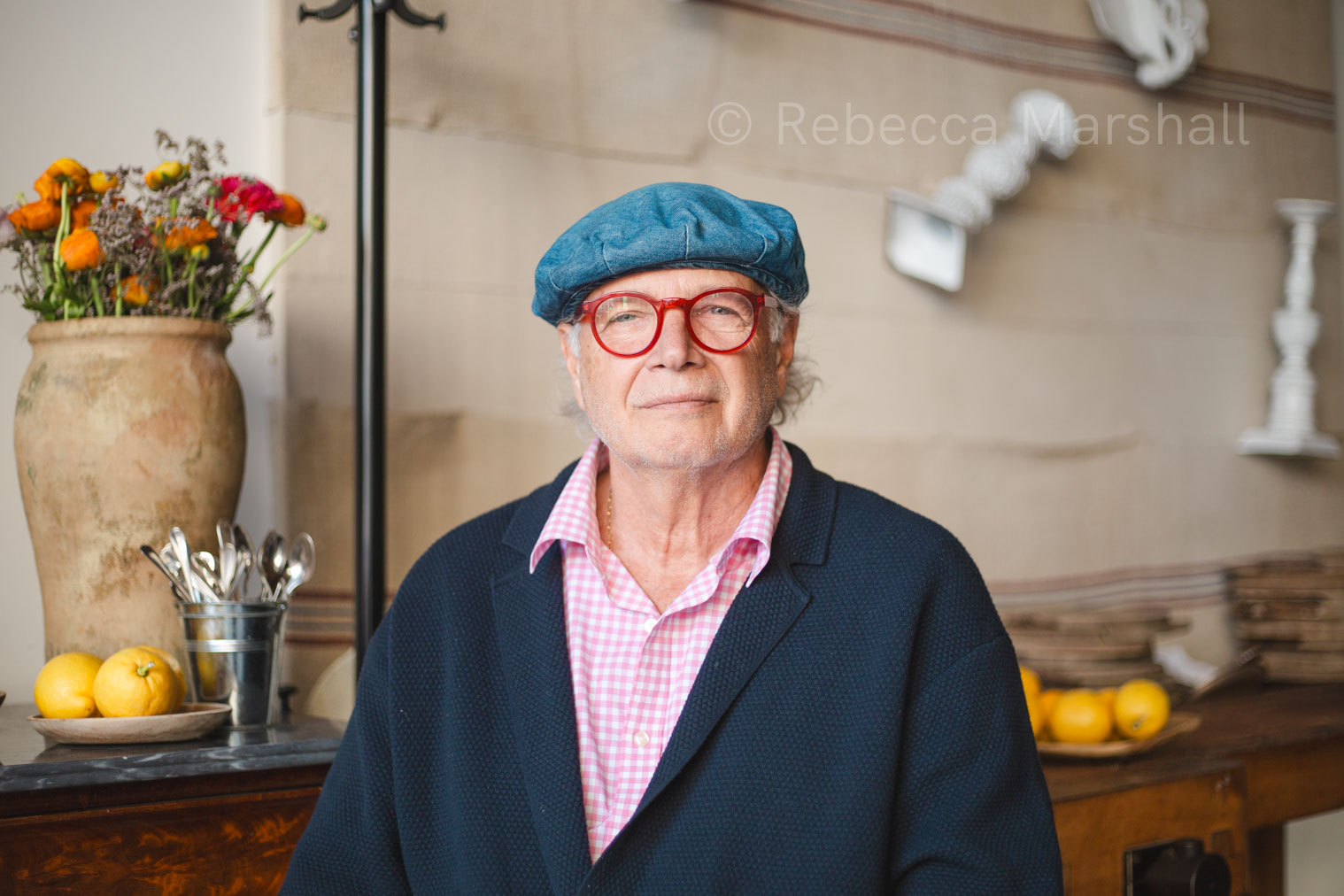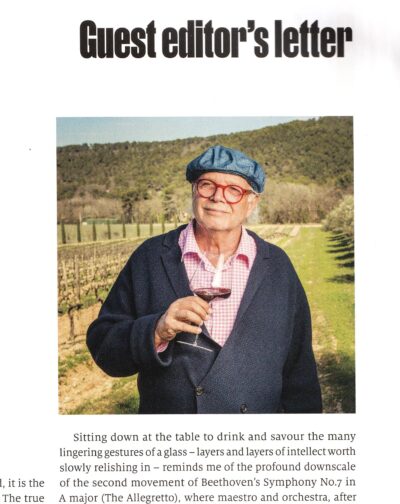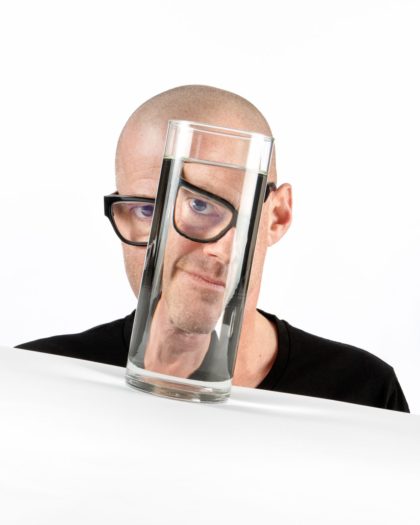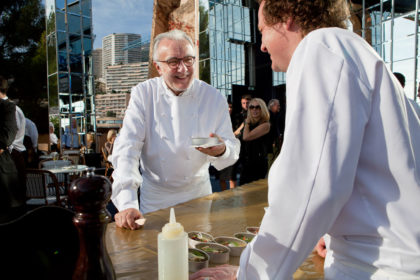I’ve made portraits of a number of celebrity chefs in the South of France, and the latest, photographed at his restaurant in Provence, is Argentinian. Hailing from the romantic wilds of Patagonia, Francis Mallmann is regarded as the most influential chef in Latin America, best known for his mastery of open-flame cooking. Yet it turns out that he doesn’t take himself too seriously: Mallmann’s Instagram bio presents him to his million-plus followers with a cabbage on his head.
I enjoy making portraits of chefs. Not only might I be invited to partake in some exceptionally good food, but creative chefs have something in common with photographers. Whether in terms of the balance that is required between the technical and creative elements of their work, or the patience and focus needed to bring the imagined into being, chefs seem to relate to what I do as an editorial portrait photographer – and I like hearing about their often surprising ways of seeing the world.
Celebrity chef Heston Blumenthal (photographed for GQ) showed me round his experimental kitchen in Provence and blew my mind with his pioneering work with positive words to change the taste of food; Joël Robuchon (photographed for Monocle magazine), the French holder of no less than 26 Michelin stars, belied his reputation for sophistication by saying that if he could choose his last meal ever, it would be a simple saucisson with fresh bread; and the scale of the celebration that ‘the Godfather of French cuisine’ Alain Ducasse (photographed for the New York Times) laid on for his 25th anniversary at Monaco’s Louis XV restaurant (240 chefs, many well-known, were invited to this extravagant event), wowed me. Francis Mallmann, guest star of Netflix’s ‘Chef’s Table’ and ‘Top Chef’, told me that to counter the effects of jetlag that morning, he’d been sewing a dress.
This cover portrait had been assigned by luxury lifestyle magazine Club Oenologique, and the journalist, who’d flown over from London that morning, looked slightly non-plussed by this pre-interview discussion. I’d recognised and introduced myself to Francis outside, as I was roaming the grounds of Château La Coste, where his Provence restaurant (one of 9 worldwide) is situated. By the time we reached the table where the writer was waiting, Francis and I were already quite deep into the design of the dress (his own; “it folds over”), and the (many) benefits of early morning sewing.
Before beginning the interview, Francis asked whether we would like coffee, and some of the raspberry sorbet he had made earlier for his children? (an offer neither writer or photographer hesitated for an instant to accept). Club Oenologique is a publication primarily dedicated to wine not food, however, and the writer, didn’t waste any time getting onto the topic. For the upcoming issue of the magazine, Francis was to be guest editor. What was his philosophy on wine?
I couldn’t stay to listen, as I had my portraits to prepare for, but I was amused to hear of his apparent dislike for the language used by sommeliers. Using theatrical arm gestures to illustrate some of the dozens of similes they may use to describe a wine, from cherry or vanilla to oak or smoke, he made the irreverent observation that none ever mention the wine’s “notes of cow pat or overtones of pesticide“, whose molecules have made a more tangible contribution to the grapevine.
The portrait part of Club Oenologique’s appointment was split, unexpectedly for me, into three parts. What I initially thought was a toilet visit on his behalf after the first picture in the restaurant, turned out to be Francis moonlighting with another magazine journalist. At 67 years old, Francis multitasks with the best of them, and on this day, it transpired that he had rendez-vous with several writers and their photographers, all assigned to the same time slot, in different parts of the château.
In Part II, we took a golf buggy up to distant vineyards, to make pictures of Francis among the (wintry, stunted) grapevines with a glass of red in hand, as per my photographer brief. Then, after another break, photographers and journalists finally converged before his signature fire pit, where were invited to take turns making portraits of the live-fire cooking king in his chef’s whites.
Francis Mallmann has a strong eye for colour and pays close attention to detail in the interior design of his restaurants. This one, gastronomic jewel in the Château La Coste crown -a domain famous for the modern art installations that decorate its grounds- was inspired by Paul Cézanne’s former studio, in Provence. When I asked if we could move the odd decorative item for the portrait, he had a story for each object. This was a man who once bought a house because he fell in love with a tree in its garden – and imprinted a piece of its bark in gold to wear around his neck. He loves lemons, not simply for their colour and taste, but for the love and hope that they symbolise – and so lemons were scattered liberally around the room.
What would be Francis Mallmann’s next project? According to my research, he has two more restaurants in the pipeline, a new speciality in plant-based, open-flame-cooked, food (bringing vegans round to the fire pit) and a documentary about disobedience in production. Yet the project he was keen to tell me about was his next trip to his private island in Patagonia. Every so often, Francis takes a select, small group of millionaires (each guest pays a hefty sum for their ticket), for the 7-hour road-trip through Patagonia and 1-hour boat ride across a stunning lake that lead to his own wild, remote slice of paradise. Here, they sit around a fire, immersed in nature, reading poetry and grilling food. “There is nothing there, only forest. You might not like it“. On the contrary, I explained, the concept was absolutely up my alley – and perhaps his guests might even appreciate a photographer coming along to capture their trip-of-a-lifetime. Watch this space…
> See Portrait portfolio
